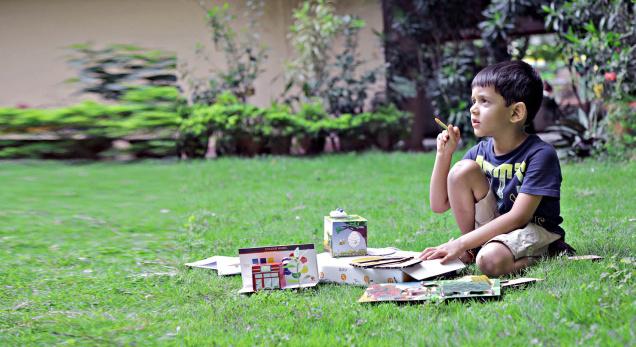
Connecting theory and practise, Curiositi designs education kits to make the classroom experience more interesting for school children
If you are in class eight, what is the best way to learn about how an electric circuit works? Would you prefer wordy paragraphs and diagrams in a text book? Or would you like to construct a security alarm and see how an electric circuit works in the process? Manoj Thandassery and Vinod Abraham, co-founders of Curiositi Learning Solutions Private Limited, believe that the latter is a better option, especially when it comes to learning concepts in science.
Around July 2013, both Manoj and Vinod left the corporate sector in the US and headed to India, more specifically Bangalore, to explore the idea of bringing fun back to learning. “When you think about it, learning science through activities and experiments is the most obvious thing to do. That is how we would have liked to learn science! However, we realised that while the NCERT and the NCF had oriented schools, teachers and textbooks to engage students in activity-based learning, the shift hadn’t quite happened with a lot of schools. We spoke to more than 20 schools in 2013 in order to understand this and realised that while a lot of schools would like to introduce activities in their classrooms, they were reluctant. This was because of various reasons, starting from limited labs to the fact that teachers weren’t motivated enough. So, most of these activities devolved into mere chart work or downloaded stuff from Google. It was then that we decided to build activity kits that were mapped to the syllabus and which could be supplied to the classroom,” they explained.
So Curiositi, which comprises a group of academics, product designers and technologists, works closely with schools and comes up with activities that connect theory and practice. Thereafter, they design and package those activities into kits and deliver them to classrooms. “For example, say a student is learning about the various kinds of rocks in his environmental science class, we have managed to source samples of those rocks and present them through our kit such that the kids can touch, feel their texture and relate to the description in their textbooks,” explained Manoj.
“Most of these kits are used under the guidance of teachers. So in a sense, our work is also to empower teachers,” said Vinod. The team has reached out to 85 schools and around 20,000 students so far and hopes to reach out to more parents and students with an online subscription venture they have started. “Now, anyone interested in our kits can log on to our website and subscribe to a monthly package. Once that is done, each month, we deliver a syllabus-mapped kit to the house,” announced Manoj.
Have they reached out to Government schools as well? “Not yet. But, we are exploring the idea of designing kits in vernacular languages. It is not impossible, we realise. Also, what we have tried to do is design activities such that reading comprehension skills do not inhibit a child’s process of learning concepts in science,” they explained.
With more initiatives like Curiositi attempting to change how learning happens both inside and outside a classroom, is the education system itself moving towards an overhaul of sorts? “We don’t know about a revolution. But surely, if there is a change that needs to happen — at least in terms of the shift from emphasis on grades to understanding of concepts, it has to happen with parents. That is where thought processes need to change. Also because science cannot be learnt any other way,” they added.

